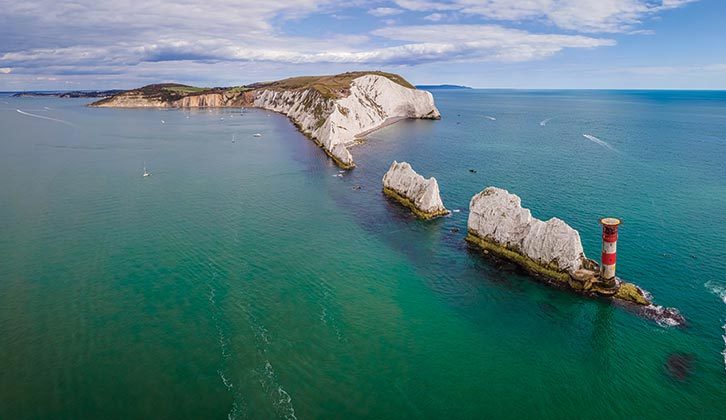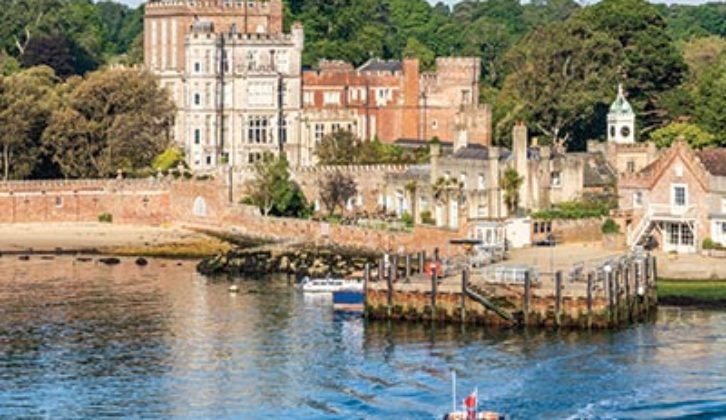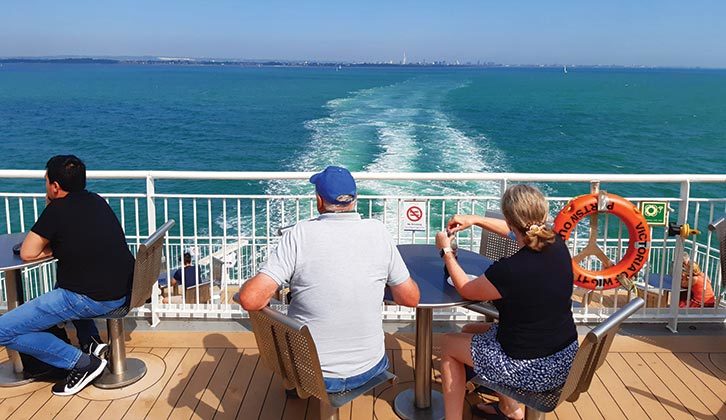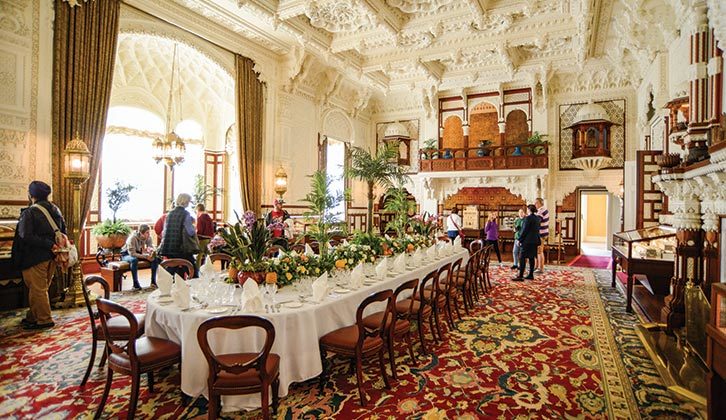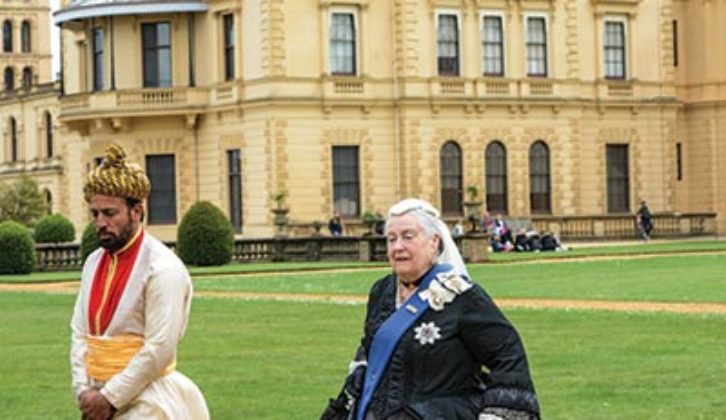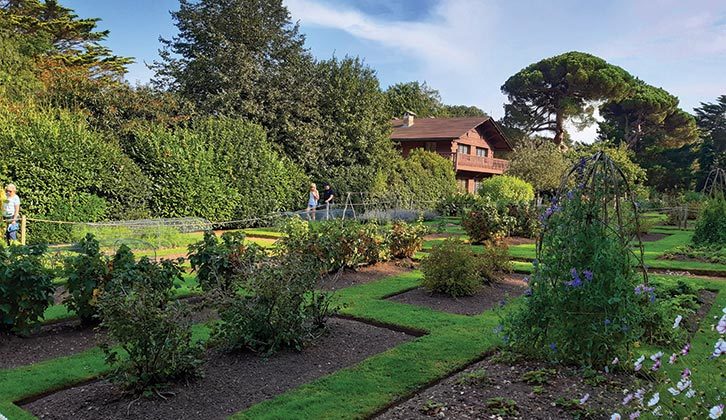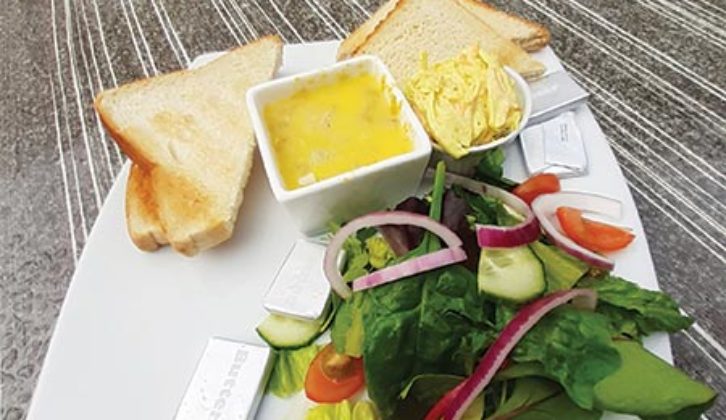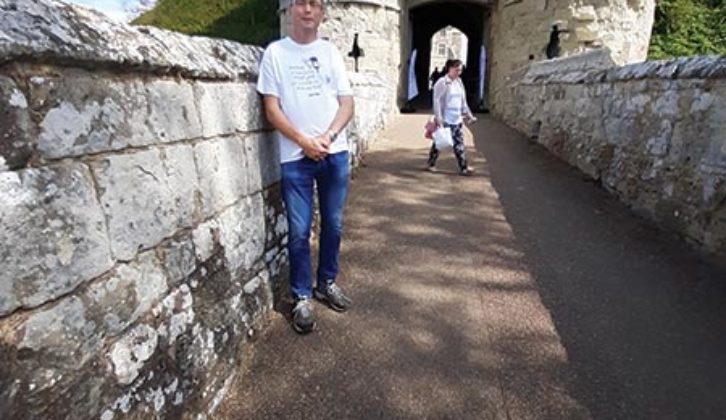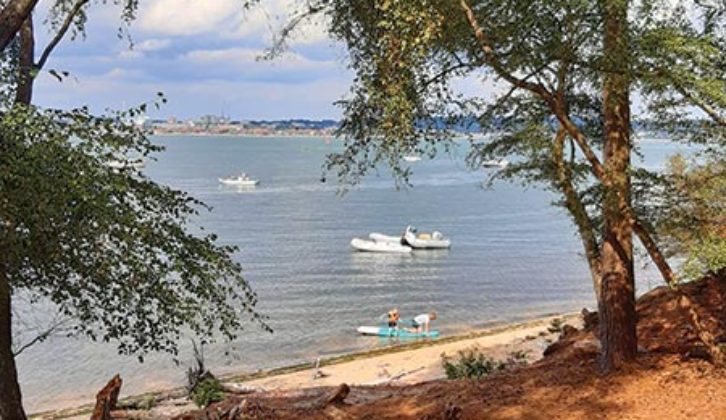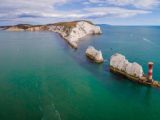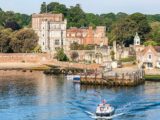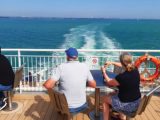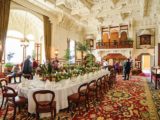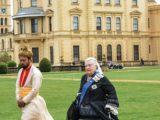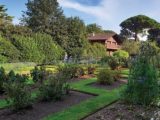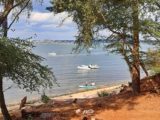Queen Victoria and Prince Albert took just four hours to travel from Buckingham Palace to their much-loved family retreat at Osborne, on the Isle of Wight, in the 1850s. That shows how rapidly Industrial Revolution Britain was modernising. In the 21st century, a very similar trip took me a day and a half.
But then, Victoria and Albert did not have to contend with a lorry driver being taken ill on the motorway, resulting in a three-hour tailback on all surrounding routes.
That prevented me getting to the late-afternoon ferry I had booked. Fortunately for me, Wightlink managed to rearrange my crossing, and the following afternoon, I was leaving Portsmouth.
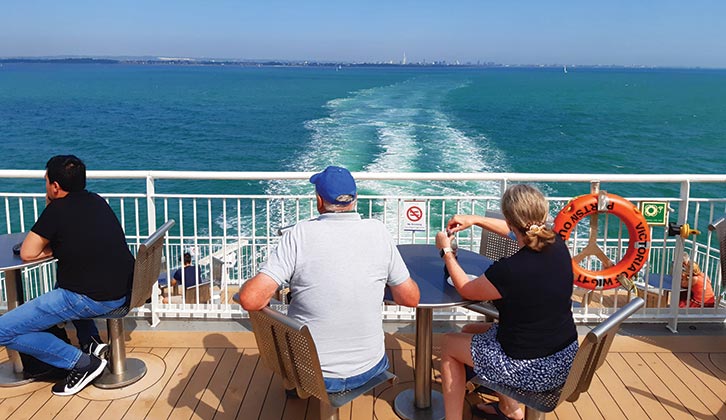
I had wanted to visit Osborne for some years, after discovering that this rather grand private family home has its own beach (among other things). Apparently Victoria, along with being a dab hand at poker, was an early advocate of the great benefits of sea-bathing.
Added to that was the fact that it is on an island, so getting there would involve at least a short sea crossing with our long-term-test Bailey Autograph motorhome.
Even after that short sea crossing, it felt odd to drive off the ferry at Fishbourne and not immediately switch sides of the road. However, apart from that, roads on the Isle of Wight are by no means typically British.
Narrow roads ahead
I ended up having to take quite a detour to reach my first destination, Adgestone Camping and Caravanning Club Site, because almost every side road I encountered came with a warning that it was only 6ft 6in wide.
Although I later discovered that not all of these roads were quite as narrow as that, the approach road to the campsite seemed to be. You do need to take care on it with a motorhome. Having settled in, my first destination was a trip back to Osborne.
The estate was acquired by the couple in 1845. In 1848, Victoria celebrated her 29th birthday there, being serenaded by a brass band – just as royalty were falling out of favour across the Continent in that Year of Revolutions.
Osborne, however, was as much Albert’s project as Victoria’s. He insisted on the house being built in an Italianate style that was only just becoming fashionable. He was a champion
of innovation, too: the house was completely wired for electricity in 1893.
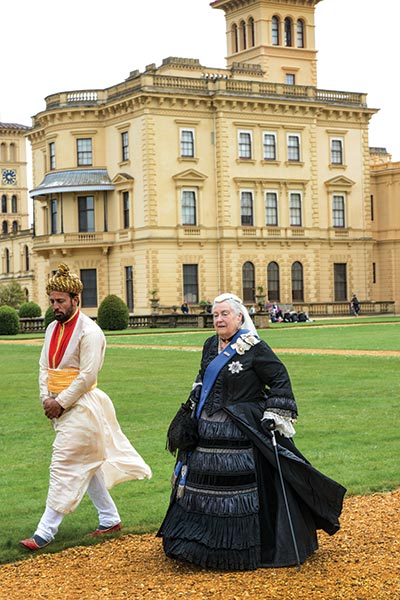
Albert was also just as keen on the benefits of swimming as Victoria was. He designed a floating bath, which was towed out 60m from the shore so the children could learn to swim.
Victoria preferred the use of a bathing machine, which was pulled down across the shingle beach on rails. Since 2012, this has been restored (having briefly seen service as a chicken coop) and now stands on display next to the café, where you can enjoy an ice cream while listening to the soothing sound of the rippling waters.
Statues and servants
Albert’s rather earnest style is everywhere: the interiors of the house are just what you might expect to see on the country estate of the second son of a minor 19th-century German prince.
There is a panel showing Cupid and Psyche, figures the couple felt a kinship with, and a statue of Antinous, a servant and favourite in Emperor Hadrian’s household who died tragically young.
Most of all, you can really see Albert’s thinking at work in the Swiss Cottage, which he had built in the grounds of Osborne, along with a market garden, designed to teach his children a bit about economics and farming. Apparently the aim was to make them better rulers.
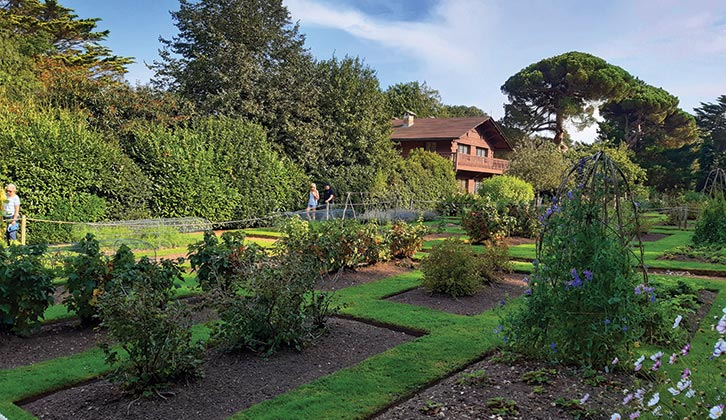
Each of the children had their own specially engraved mini-wheelbarrow. It’s strange to think this was just half a century after Marie Antoinette had lost her head for doing pretty much the same thing at Versailles.
Like all great houses, Osborne required a huge staff to run it. For example, Albert’s dressing room was fitted with a bath and shower cubicle (more innovation). After his death in 1861, Victoria was determined nothing should change, so for the next 40 years, a servant had to carry up hot water to fill the bath every night.
Later in life, Victoria was persuaded to extend the house with the Durbar Wing, including the Durbar Room – an imposing reception room with an ornate ceiling. This marked her accession as empress of India, a country she never visited.
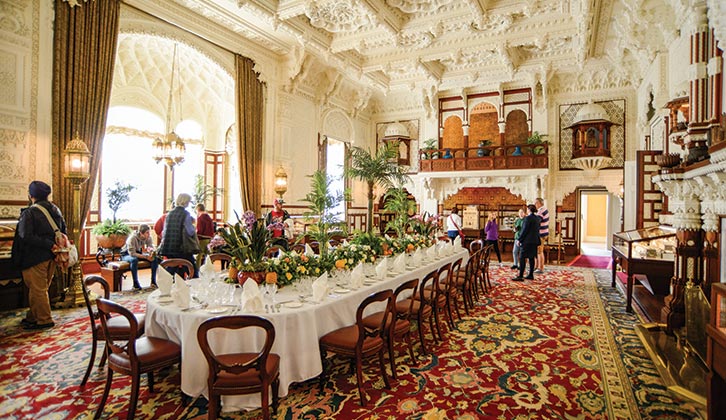
It’s probably not particularly surprising that her successor, Edward VII, wanted very little to do with the place. In total, Osborne was only a family residence for some 55 years.
Interesting diversion
The Adgestone campsite is well located for anyone wanting to take advantage, as I did the following morning, of the excellent network of traffic-free trails that exists throughout the island.
But all too soon the clouds had come over, so while a brief stop for early lunch at The Old Smithy, in pretty Godshill, proved an interesting diversion, I wasn’t tempted out in the rain at Shanklin, but decided to move on to the western end of the island instead.
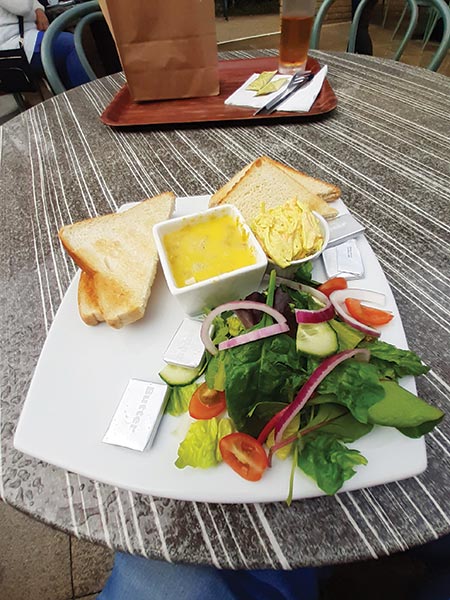
Fortunately, by the time I was past Ventnor, the sun had come out again, and as I sped along the A3055 Military Road, the Highdown Cliffs were shining like a beacon to guide me.
In a motorhome, you have to take the road that climbs these 147m-high cliffs quite steadily. I tried not to notice how in some places there is no barrier, either.
My next campsite, Stoats Farm, gave me a very warm welcome. I was on a fully serviced standard pitch with a ‘Premier View’ of Tennyson Down – so named because it was one of the poet’s favourite walking haunts – rising up right behind the site. It was here that I walked the next day, on my way to what is possibly the Isle of Wight’s most famous landmark, The Needles.
Considering how fearsome this group of rocks looks, it’s surprising how few shipwrecks there are around here. But that is likely thanks to the Needles Lighthouse, which you can also visit.
Military connections
The south side of this promontory was used during the late 1960s as a testing site for Black Arrow rockets, Britain’s short-lived attempt to enter the space race. It looks, appropriately enough, rather like a film set from Thunderbirds.
The north side also includes the Old Battery, a fort dating back to before Victorian times, which looks imposing but seems to have been an also-ran in military history: it only fired at one ship during the First World War, and that turned out to be friendly fire.
As you would expect, the views out to sea and back towards the mainland and Hurst Castle are spectacular. The foreground is rather marred by the chairlift down to the beach at Alum Bay, but this stretch of coast is historically important.
Studying the area in the late 17th century, Robert Hooke, an early member of the Royal Society and a native of nearby Freshwater, noticed that there were shells embedded in
the cliffs some 60 feet above the high-water mark. This led him to conclude the Earth must have been formed by a series of earthquakes.
Such theories were ignored at the time, but are seen as pioneering now. You can follow the Robert Hooke Trail to find out what else this brilliant scientist achieved on the island.
Castles and crossings
My final visit the next morning, before catching the ferry back to the mainland at Yarmouth, was to historic Carisbrooke Castle.
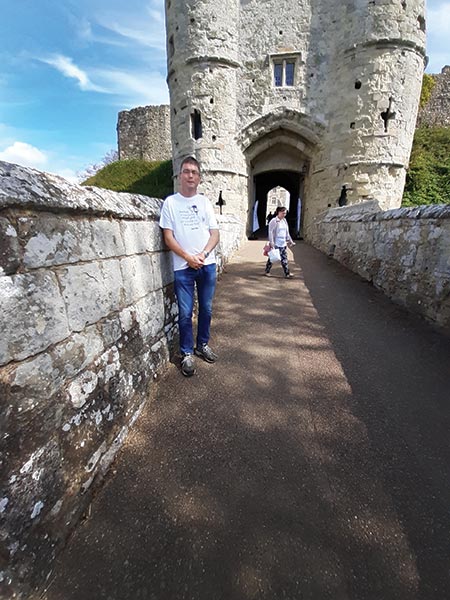
This impressive fortress (with copious amounts of parking) was besieged by the French in 1377. So much for the French never invading Blighty after 1066. It was substantially strengthened under Elizabeth I in preparation for a Spanish invasion – which, as we know, never happened.
But it is perhaps best known as the last place Charles I stayed before he was taken to London for his trial and execution in 1649. He tried to escape, but was too fat to fit through a window. Miraculously, that window still survives. It’s one of those places where you stop to look and marvel at the “what ifs” of history.
So I bade farewell to the Isle of Wight, but not completely to islands off the south coast. Arriving in Lymington, it was a very quick toddle around Bournemouth to reach South Lytchett Manor Caravan Park, a campsite that made it onto our best motorhome site round-up, and prepare for my final excursion, over to Brownsea Island.
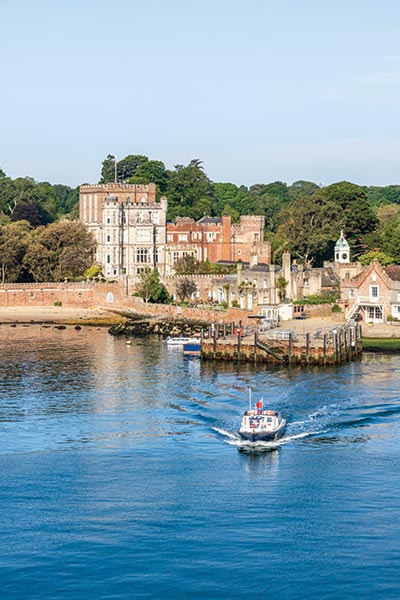
Scouting history
Brownsea is, of course, best known as the venue for the first-ever Boy Scout meeting. But it was of greater interest to me for its more recent owner, a Mrs Bonham-Christie. She far outdid Victoria when it came to eccentric lifestyle choices.
One of the early champions of animal rights, Mrs Bonham-Christie bought the island in 1927, and promptly evicted all but a handful of its human inhabitants, forcefully (sometimes violently) expelling anyone daring to visit. Even her adult son had to ask permission beforehand.
She particularly disliked the famous youth movement the island spawned. “My experience is very poor of the Scouts. They treat the poor dumb animals who cannot speak nor have money to defend themselves so cruelly,” she said.
Mrs Bonham-Christie also detested all forms of conservation, believing that nature should be allowed simply to run its own course. Many thought her mad, an impression that she did nothing to dispel by remaining on the island until she died, aged 95, in 1961.
She lived in just one room of the island’s Tudor castle, eating nothing but bread and eggs and using a paraffin stove to cook. Apparently the fumes worked wonders for her skin. Even after she broke her arm, she refused painkillers, because, she said, animals had been “tortured” in their development.
Stories were rife of the island being overrun by giant rats. Not all of those stories were true, however, and it is largely thanks to her that Brownsea has become a haven for one animal that has virtually vanished elsewhere in the UK – the red squirrel. Magnificent peacocks roam about freely here, too.
Adventure island
After a short boat ride from Poole Harbour, where I parked, to Brownsea, I was very keen to see the residence of this real-life Miss Havisham.

Unfortunately, the castle itself is now only open to employees of John Lewis, its new owner, to use as a holiday home.
In any case, Neil, my guide while I was on the island, clearly did not think much of Brownsea’s former owner. He pointed out that by the time she died, the place had been overrun with one species – the rhododendron – which it took the National Trust 50 years to clear.
He was much more positive about the island’s Scouting links. Wandering around, coming across clearings in the pine forest leading down to little bays with paddle boarders passing by, it’s easy to see why Brownsea appealed to Robert Baden-Powell in 1907.
Visitors have all of this potential for adventure to explore, yet the island is less than half a mile from one of southern England’s largest conurbations.
Baden-Powell was keen for less advantaged boys to benefit, too. Half of the 22 boys who turned up for that first camp were from public schools, but the others were selected from less well-off districts of nearby Poole – an idea seen as deeply radical in Edwardian England. Sadly, just a few years later, six of those 22 would die on Flanders Fields.
A warm welcome for all
Neil tells me that they managed to get the Scouts back onto the island for a very special centenary celebration in 2007, when troops from all around the world put up their flags.
That’s one of the many wonderful things about these lovely islands of the UK – they’re packed with a long and fascinating history that has been influenced by events and characters from across the world. These days, though, they are more likely to see visiting tourists than heads of state, but they still provide a warm welcome for all – and long may that continue.
- Looking for somewhere to head to for your next tour? Then take a look at our round-up of the best motorhome sites in Dorset
Where we stayed
Adgestone Camping and Caravanning Club Site
Lower Road, Adgestone, Isle of Wight PO36 0HL, 01983 403 432
- Open: 21 April – 3 October
- Charges: From £8.60
South Lytchett Manor Caravan Park
Dorchester Road, Lytchett Minster, Poole BH16 6JB, 01202 622 577
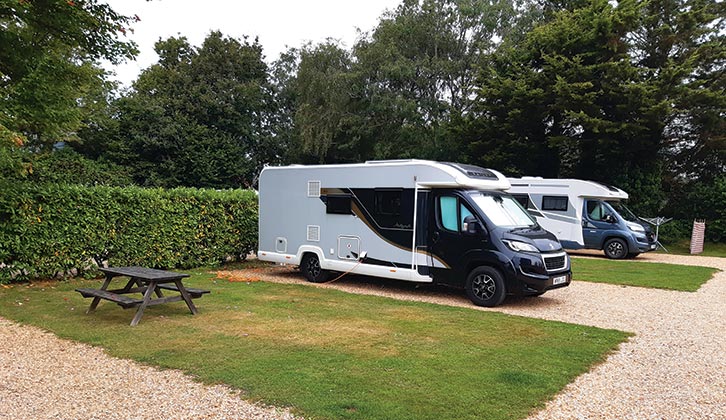
- Open: 1 March – 2 January
- Charges: £16.50-£34
Weston Lane, Totland, Isle of Wight PO39 0HE, 01983 759 608
- Open: 1 March – 31 October
- Charges: £25-£50
Find out more about the Isle of Wight
If you enjoyed this, why not read these:
- We take a look at some of the top campsites for fishing
- See how Colin Williams got on when he embarked on a tour to the Forest of Dean
If you’ve enjoyed reading this article, why not get the latest news, reviews and features delivered direct to your door or inbox every month. Take advantage of our brilliant Practical Motorhome magazine SUBSCRIBERS’ OFFER and SIGN UP TO OUR NEWSLETTER for regular weekly updates on all things motorhome related.
